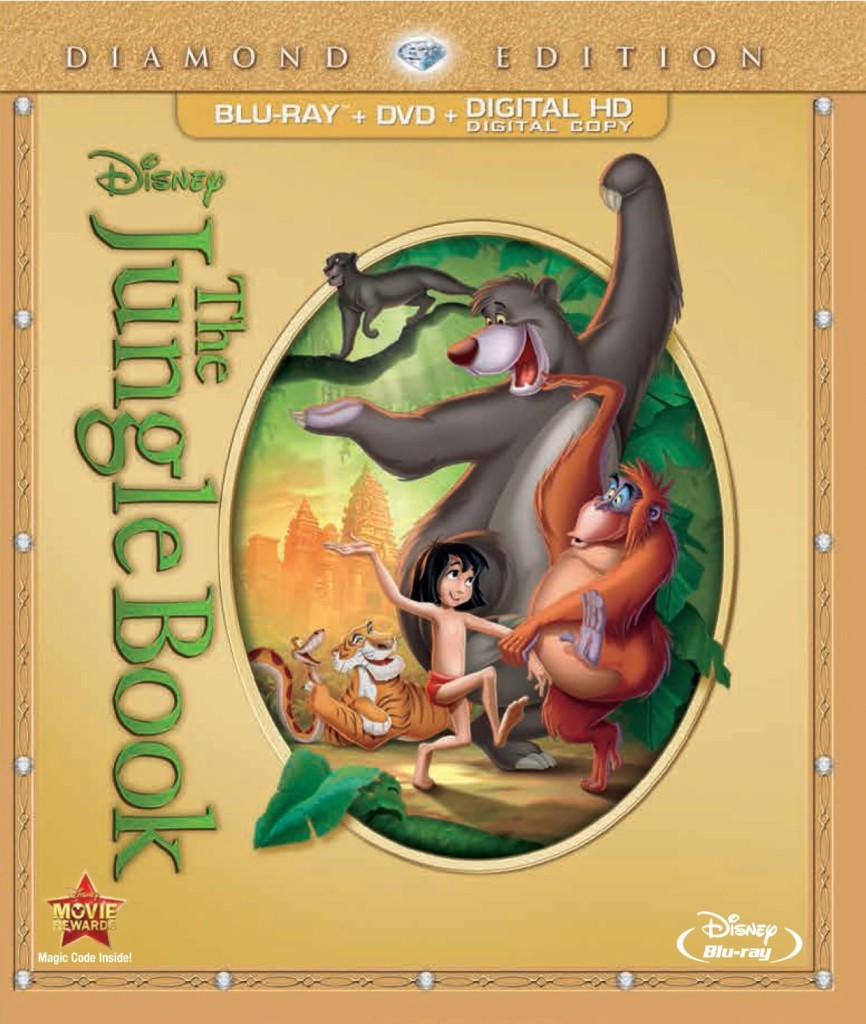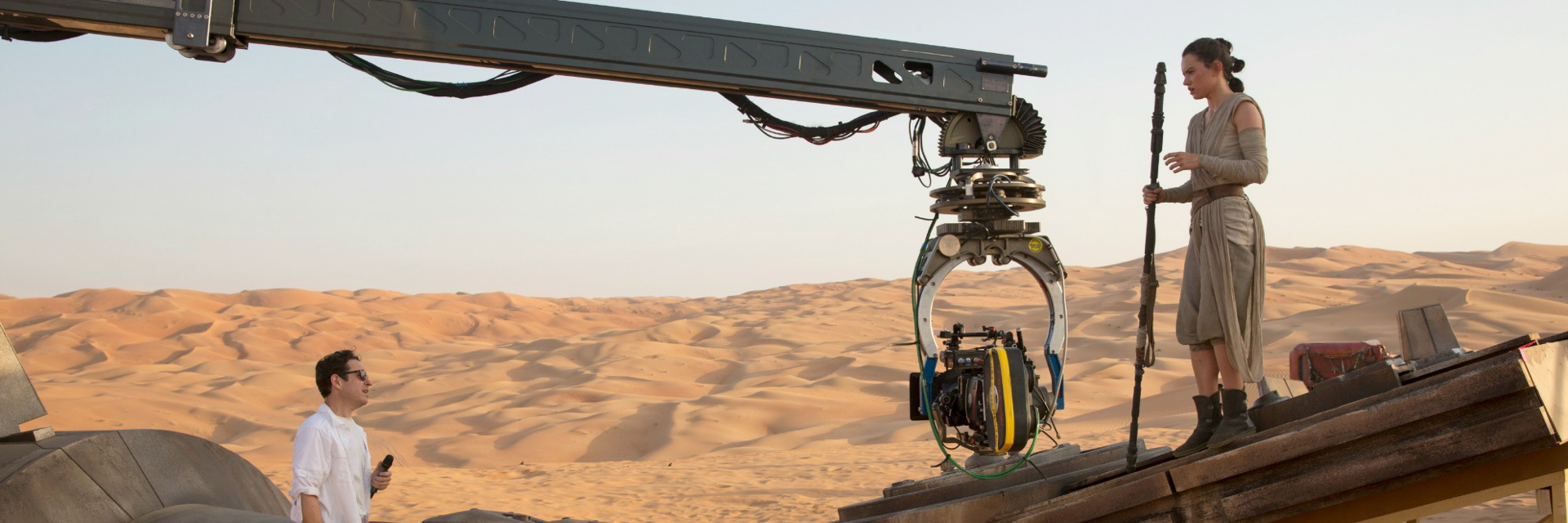There is a distinct difference between the 2D and 3D versions of the new Disney film, “The Jungle Book,” and enough so that it’s worth paying the 3D ticket premium of a couple extra bucks. The 3D version of this visually dynamic movie exploits the plethora of opportunities for showcasing the immense and varying depth of jungle vegetation and wildlife, not to mention very effective jump-scares.
 In the past 19 hours I have seen three versions of this movie: the new computer-generated “live-action” version in IMAX 3D and the same film in 2D with Dolby Atmos sound, as well as the 2014 Blu-ray HiDef Diamond Edition of the 1967 traditionally animated classic – the last film produced under the oversight of Walt Disney himself.
In the past 19 hours I have seen three versions of this movie: the new computer-generated “live-action” version in IMAX 3D and the same film in 2D with Dolby Atmos sound, as well as the 2014 Blu-ray HiDef Diamond Edition of the 1967 traditionally animated classic – the last film produced under the oversight of Walt Disney himself.
My summary below incorporates comments about all three versions of this adaptation of Rudyard Kipling’s story of a boy adopted and raised by animals in the jungle. (Of course there are many other cinematic adaptations of this tale, including two others produced by Disney: a 1994 live-action retelling called “Rudyard Kiping’s The Jungle Book” starring Jason Lee as a much taller Mowgli, and a 2003 animated DVD premiere sequel called “The Jungle Book 2” featuring John Goodman as the voice of Baloo.)
Director Jon Favreau’s new “Jungle Book” will likely appeal very much to kids, especially young boys whose idea of a kids movie is “Harry Potter” and all Marvel and DC superhero films. Unlike the sweetness, charm, bright colors, and light and fun musicality of the 1967 movie (or similarly Disney’s 1999 animated “Tarzan”), this one is much darker visually and in tone. There are far more chases and action and overtly scary scenes, as well as gigantic over-sized representations of two of the villain characters — the orangutan King Louie and the snake Kaa, much like the Harry Potter series — all of which will likely appeal to kids used to this kind of presentation in theaters, on TV and in video games. And it also has a couple soft and tender moments, and a bit of humor (mostly from Bill Murray as the lazy, fun-loving bear Baloo).
 There are at least three jump-scare moments that are enormously intensified in 3D when the evil tiger Shere Khan (Idris Elba) first leaps out of the tall grass at Mowgli unexpectedly, when his head later pops out of the screen in close-up in a tree, and similarly when the head of the giant orangutan King Louie pops out from behind a pillar where Mowgli is hiding — it fills the screen in close-up. None of these scenes have near the same impact in 2D.
There are at least three jump-scare moments that are enormously intensified in 3D when the evil tiger Shere Khan (Idris Elba) first leaps out of the tall grass at Mowgli unexpectedly, when his head later pops out of the screen in close-up in a tree, and similarly when the head of the giant orangutan King Louie pops out from behind a pillar where Mowgli is hiding — it fills the screen in close-up. None of these scenes have near the same impact in 2D.
Likewise, there is a scene where the Dolby Atmos surround sound system feeds various noises to appropriately-placed speakers on the sides of you and behind you, but the system is disappointingly not noticeable otherwise; a missed opportunity with this kind of movie.
The 3D draws you in more than the 2D throughout the movie, but several other scenes in particular are noticeably and effectively accentuated, including a scene in which Mowgli is riding atop a — we’ll guess a wildebeest — along a precarious ledge on a mountain slope when a mud slide occurs that drags the animals and Mowgli into a surging river below.
On the other hand, a scene at the very beginning where Mowgli is training to out-run a predator through the forest by keeping up with his wolf cub brothers is quite blurry in 3D for long enough to bother the eyes of most people in the audience, and the scene is reprised at the end with the same bothersome impact. The scenes are a little blurry in 2D as well but that visual distraction is noticeably accentuated in 3D.
The IMAX sound system shines here with the rumble of the landslide and the roar of the river causing your seat to rumble.
And, as always, the enormous size of an IMAX screen draws viewers in to the movie far more than a standard presentation.
<Review continues below the following 55-second video of director Jon Favreau describing the impact of IMAX on “The Jungle Book”…>
The opening sequence also segues nicely from the traditional camera floating over the iconic Disney castle and continues upstream and into the jungle as the title comes up — but no opening titles, interestingly.
That the entire film was produced inside a computer is astounding — of course with the exception of the lone human star of the movie, the character of Mowgli, whose scenes were all filmed in a building in downtown Los Angeles. The level of photo-realism surpasses all that has come before. The eyes of the animals are the most impressive as they emit the emotion and soul of a human’s, especially in the wolf mother who adopts Mowgli as a baby and then has to give him up. The same is true for the main storyteller character of Bagheera (Ben Kingsley), the black panther who shepherds Mowgli.
The level of detail extends to a subtle flicking of the ears of tiger Shere Khan while laying on a rock when a fly can barely be heard buzzing around his head.
Of course the original animation can’t and does not compare to this level of visual reality. For some, that may be preferable with this kind of kids movie musical. The restored HiDef presentation on Blu-ray looks fabulously vivid and colorful. Most will notice this was not one of Disney’s highest-quality artistic achievements like “Pinocchio” or “Sleeping Beauty” since it was during the era of cost-cutting techniques also used on “One Hundred and One Dalmatians” that pained Walt Disney himself. Again, the quality of the animation may or may not be a factor in one’s enjoyment of the film.
<Review continues below the following 68-sec. video trailer for the 2014 Blu-ray HiDef Diamond Edition of the original 1967 animated film…>
To Favreau’s credit, he omitted entirely several songs from the original that feel a bit silly and tedious, such as the elephant’s song “Colonel Hathi’s March,” and especially the vulture song “That’s What Friends Are For.” In fact, he omits the vultures as characters altogether, which is a good call.
Without giving a spoiler as to his choice for the ending of the movie, we will only note that another song is omitted in the new version — “My Own Home,” sung sweetly by the young human girl who enchants Mowgli so charmingly in the original.
— By Scott Hettrick
